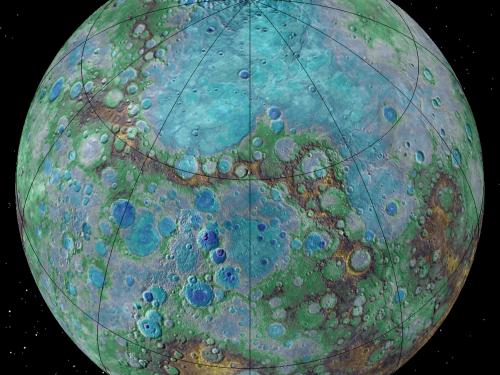Bio
Dr. Thomas R. Watters is a Senior Scientist in the Center for Earth and Planetary Studies of the National Air and Space Museum, Smithsonian Institution. He received his BS in earth science from West Chester University in 1977, his MA in geology from Bryn Mawr College in 1979, and his PhD in geology from George Washington University in 1985. He joined the staff of the Center for Earth and Planetary Studies in 1984 as a research geologist and served as Chair of the Center from 1989 to 1998 and from 2011 to 2015. Dr. Watters is the Director of the Smithsonian’s Regional Planetary Image Facility housed in the Center and supported by NASA.
Dr. Watters' research interests are in planetary tectonics, planetary geology and geophysics, and remote sensing. His research involves the identification and characterization of tectonic landforms and the development of kinematic and mechanical models for their origin. Both analytical and numerical methods are employed in mechanical modeling of tectonic features. His research also involves geophysical modeling of tectonic stresses and determining the mechanical and thermal structure of deformed planetary lithospheres. Dr. Watters has studied tectonic landforms on all the terrestrial planets, the Moon, and asteroids as well as analog structures on the Earth. Through his studies of tectonic landforms, he hopes to better understand the tectonic and thermal evolution of the solid bodies in our solar system.
Dr. Watters is involved in three planetary missions. He is a Co-Investigator on the Lunar Reconnaissance Orbiter Camera on the Lunar Reconnaissance Orbiter. Dr. Watters is a Participating Scientist on the MErcury Surface, Space ENvironment, GEochemistry, and Ranging (MESSENGER) Mission. He is also a Participating Scientist on Mars Advanced Radar for Subsurface and Ionospheric Sounding (MARSIS) instrument on the Mars Express Mission.
Media Inquiries
For media inquiries, please contact us via email or call 202-633-2370.
Contact Information
watterst@si.edu
(202) 633-2483
Related Links
Thomas Watters CV [PDF Download]








